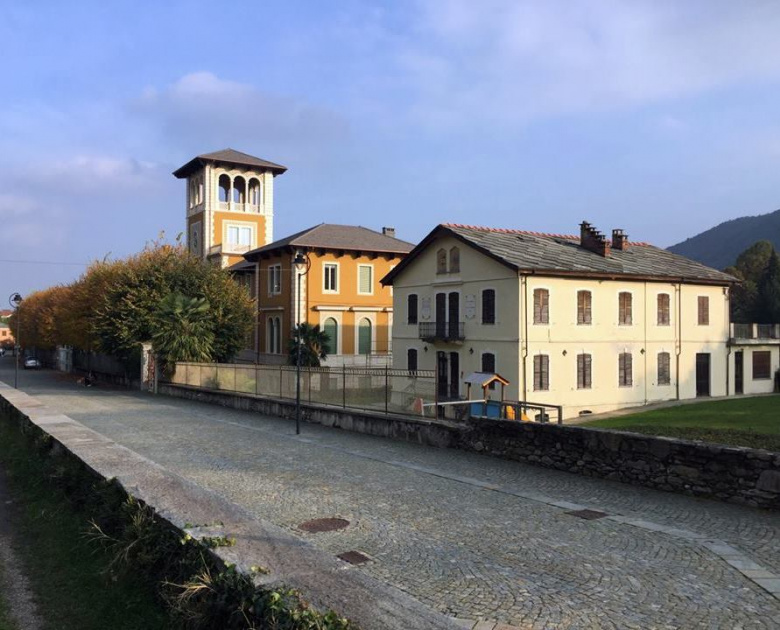Italy
The Waldensian movement was born around the year of 1170 and wanted to represent a renewing reality in the Christian world, as well as a comeback to the evangelical faith. The movement, born in Lyon and spread all around Europe, developed in Italy. We can generally talk about Valdismo, which, even if they are differentiated, maintain some common tracks as the myth of the apostolic origin of the movement, the crucial aspect of Scriptures, the evangelical poverty and the literal lecture of biblical texts. In 1218 in Bergamo, the two souls of the medieval Waldensians met in a synod that united the movement and projected it in the Europe of its time.
Information
Piedmont is located in the north-western part of Italy and is the second largest Italian region. The territory is mostly mountainous and hilly. The Alps reach 4,634 meters with Monte Rosa, located on the border with Valle d’Aosta and Switzerland, where the peak is located with the maximum height; it follows the Gran Paradiso (4,061 m.).
In Piedmont the longest Italian river, the Po, is born and some of its initial tributaries flow, such as Tanaro, Ticino and Dora Baltea. On the border with Lombardy is Lake Maggiore the second largest in Italy. Turin, the capital, is the fourth biggest Italian city and with the suburbs it reaches one and a half million people; all the other provincial capitals have less than 100,000 inhabitants, with the exception of Novara. Other larger centers are Alessandria and Asti.
The Region
When at the beginning of the 16th century the Reformation blew up Europe, Waldensians started to debate about it and felt the need to study it in deep. In 1526, about 140 Waldensians met near Laux, in the Waldensian Valleys, in a meeting called Synod . The assembly entrusted the barbas (as the itinerant preachers were called) Giorgio of Calabria and Martino Gonnin of Angrogna to establish links with the Reformation. They got in touch with the reformer Guillaume Farel and started dialogue between the Waldensians and the Reformation.In September 1532, the Waldensians met in Chanforan, at the centre of the Waldensian Valleys, and they decided to adhere to the Reformation movement and to accept its principles. They abandoned their clandestine status and they organized their own communities by building temples for preaching and naming new preachers.
-
Chanforan Monument →
Angrogna / Italy

-
Maretsch Castle →
Bolzano / Italy

-
Protestant Cultural Centre →
Bergamo / Italy

-
Waldensian Library →
Torre Pellice / Italy

-
Waldensian Museum →
Torre Pellice / Italy

-
Waldensian Museum →
Guardia Piemontese / Italy

-
Waldensian Museum →
Massello / Italy
-
Waldensian Temple →
Torino / Italy

-
Waldensian Temple →
Bergamo / Italy

-
Waldensian Temple →
Pinerolo / Italy
Reformation in Italy
The Waldensian movement dates back to the XII Century and it was born around 1170: the movement wanted to be a renewing reality into the Christian world, and a comeback to the evangelical faith. This movement wanted to live inside the Church of its time, but it was pushed out of it, persecuted and forced to hide. The main clash was all around some key points: the preaching of laics, the reading of the Bible (Valdo himself, the founder of the movement, wanted to translate portions of it in vulgar language); the distribution of bread and wine to all those participating to the mass; the taking off the richness (and the power) of the world to embrace the Gospel.
The movement, born in Lyon and spread all around Europe, later reached Italy, where it became less “itinerant”. The Poveri Lombardi (literally “poors”, as they are called in Italy) were linked with working classes in the cities, and they lived their faith in a more communitarian way. In 1526, about 140 Waldensians met near Laux, in the Waldensian Valleys, in a meeting called Synod. The assembly entrusted the barba (as were called the itinerant preachers) Giorgio of Calabria and Martino Gonnin of Angrogna to establish links with the Reformation. They got in touch with the reformer Guillaume Farel, and it started the dialogue between Waldensians and the Reformation.
The turning point to become a Church took place in 1532, when in Chanforan (in those that today are called Waldensian Valleys in Italy in Piedmont region near Turin), the movement joined the Reformation. However, it was at the same time, the prosecution and the starting of a path, not a choice of that precise moment. In 1545, a violent action hit the communities in Provence, which were massacred, and the same happened some years after in Calabria in Guardia Piemontese, San Sisto and other communities. In the same years, in Piedmont, Waldensians could defend themselves and impose in Cavour (Turin) a peace to the Duke of Savoy. However, from this peace came out the ghetto alpino (Alpine ghetto): Waldensians could keep their faith only in precise and delimitated territories, and could not leave those borders.
In 1687, the exile of Waldensian took place and they were deported to Switzerland, but two years later – in 1689 – they came back to their lands (with the help of the prince of the Dutch). Arrived in the Waldensian Valley, they fought and gained the right to exist on their land and keep their faith.
In 1848, the king Carlo Alberto of Savoy promulgated the Lettere Patenti, an edict that gave civil rights (not religious) to Waldensians and Jews. It began a new period of development for Waldensian churches, which could return to Italy to announce the Gospel.
The Waldensian Church survived particularly in the Western Alps through many persecutions and remains a Protestant church in Italy. Many historical sites and temples are visible throughout the country, particularly in Val Pellice (Piedmont Region), where their history is rooted. Other important related sites are located in Bergamo, Venice and the small town of Guardia Piemontese (Calabria Region).